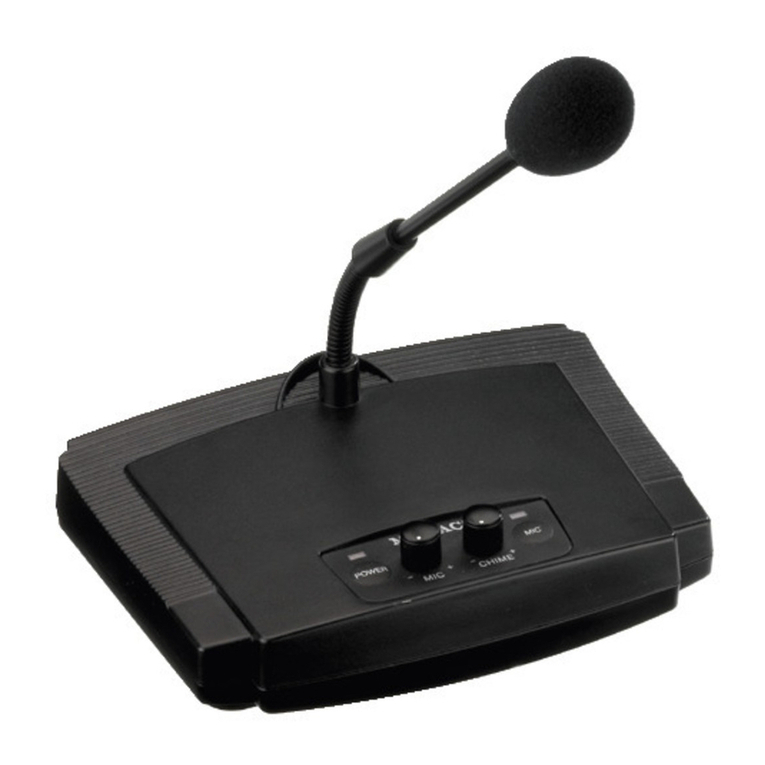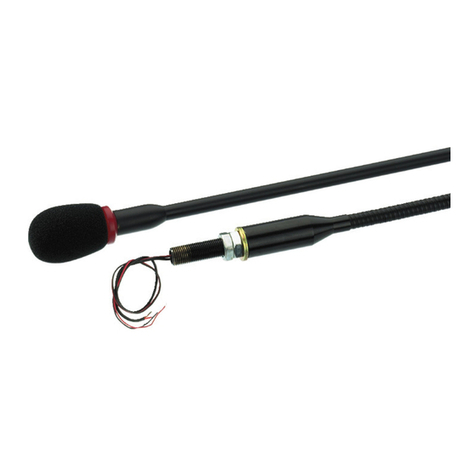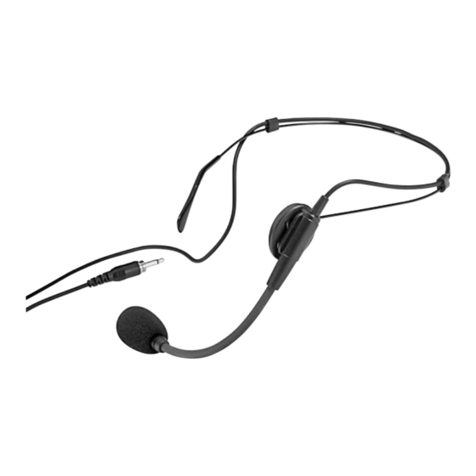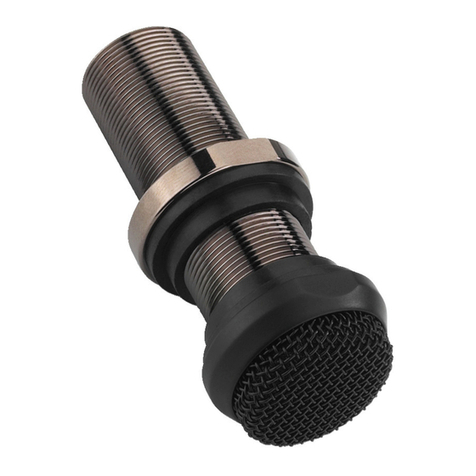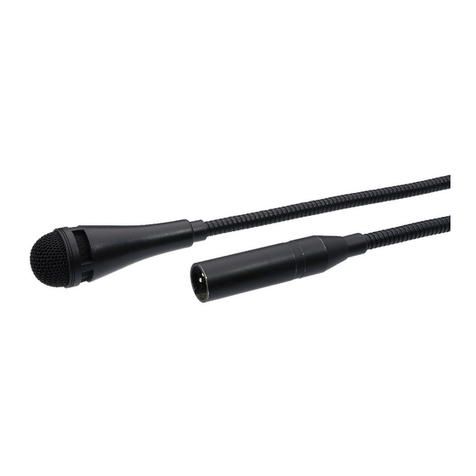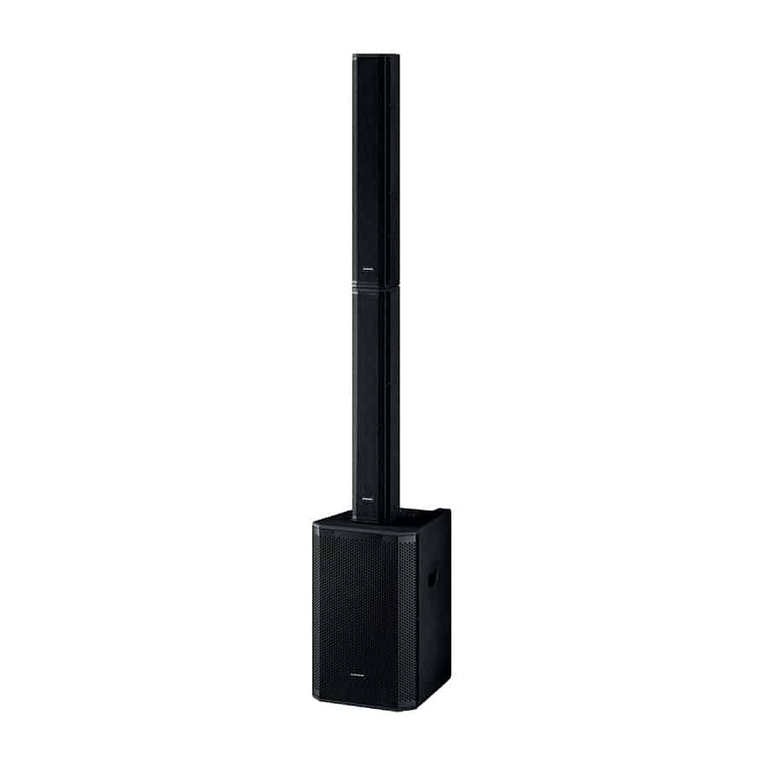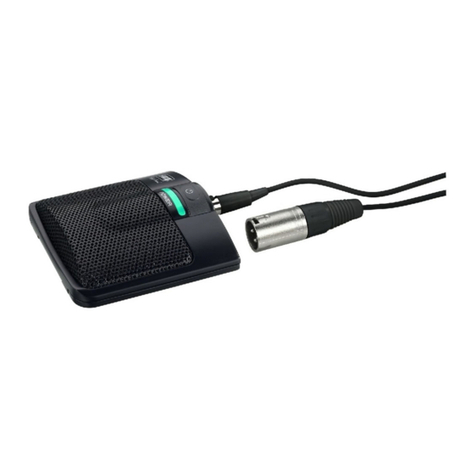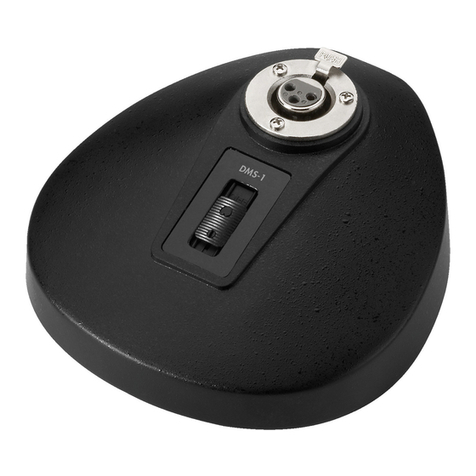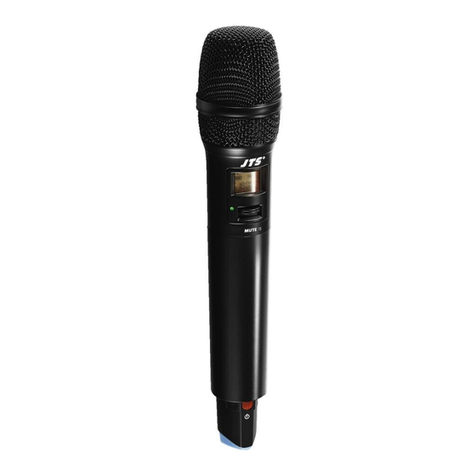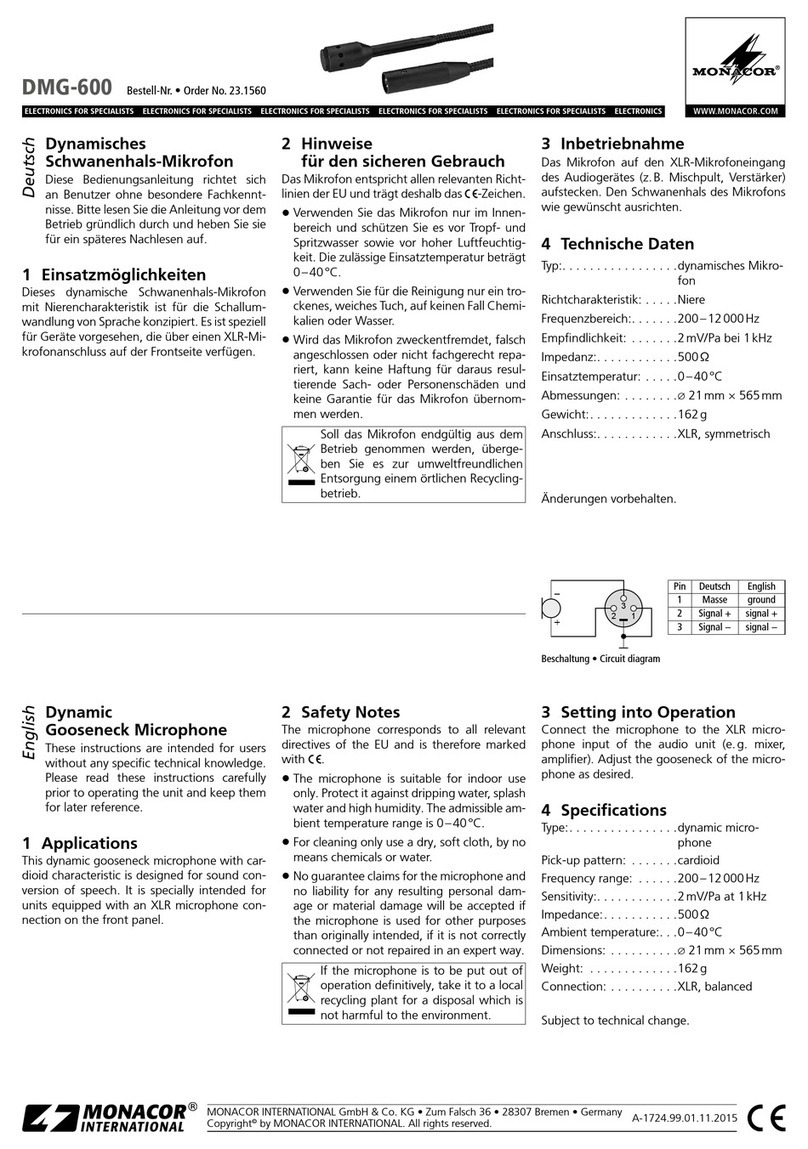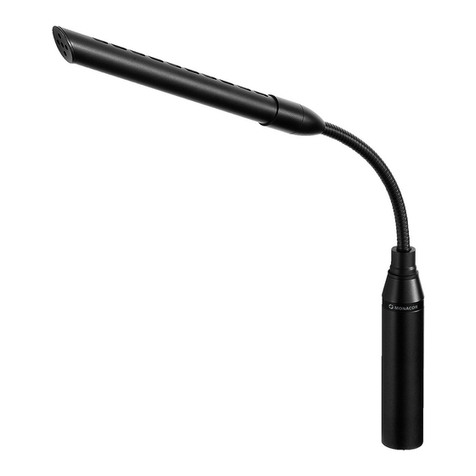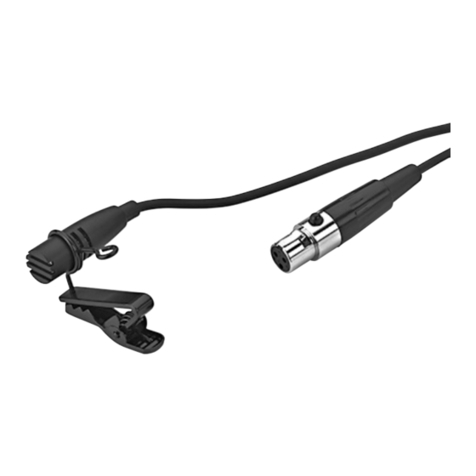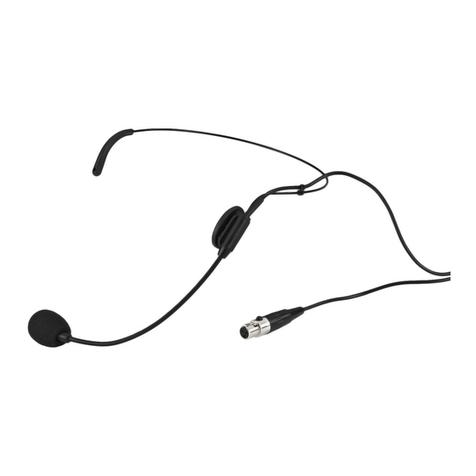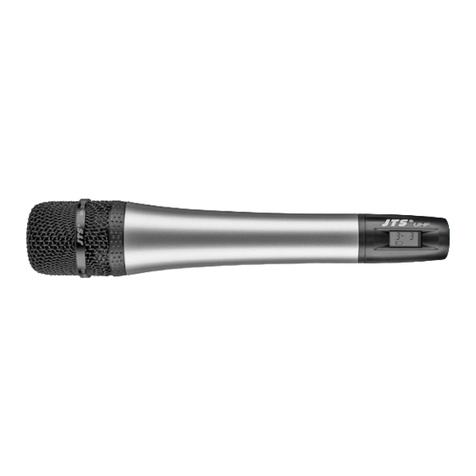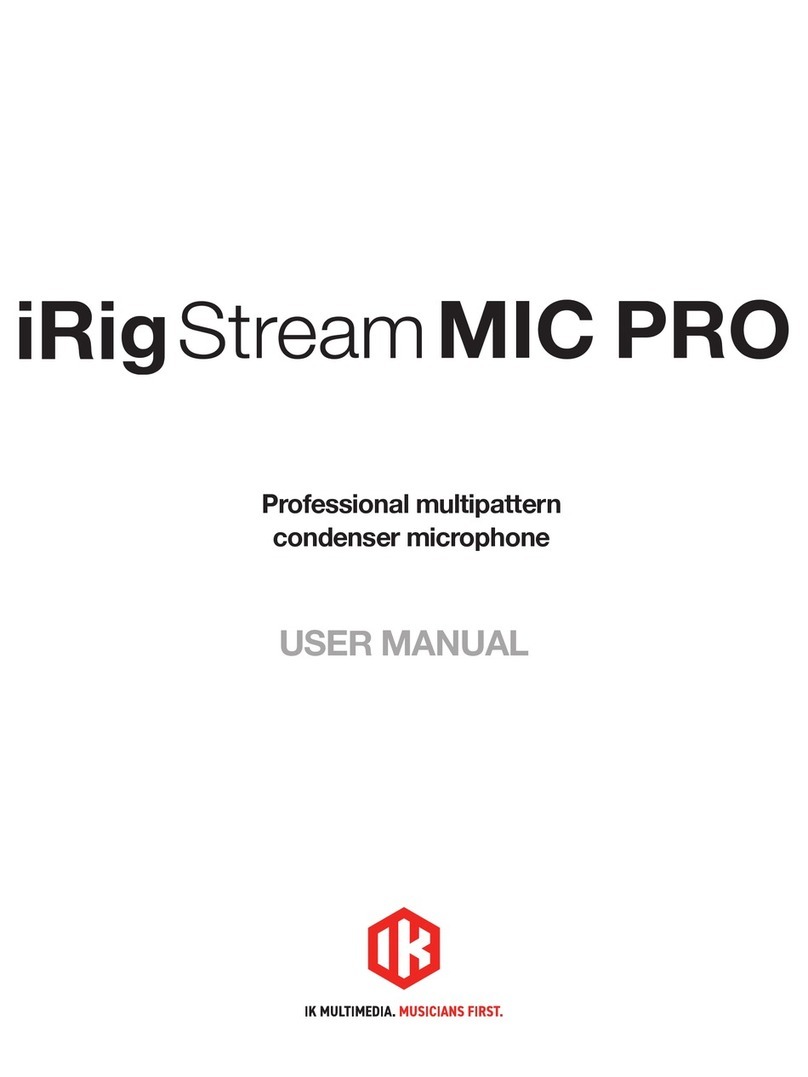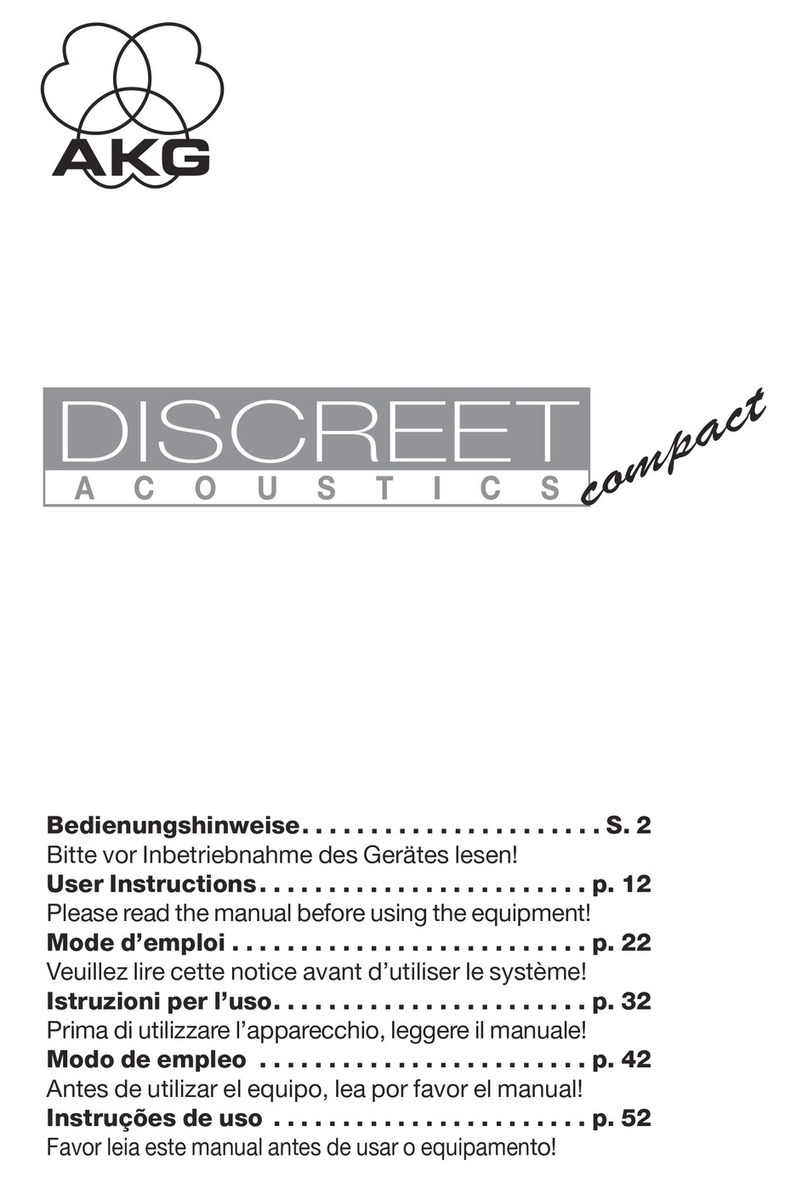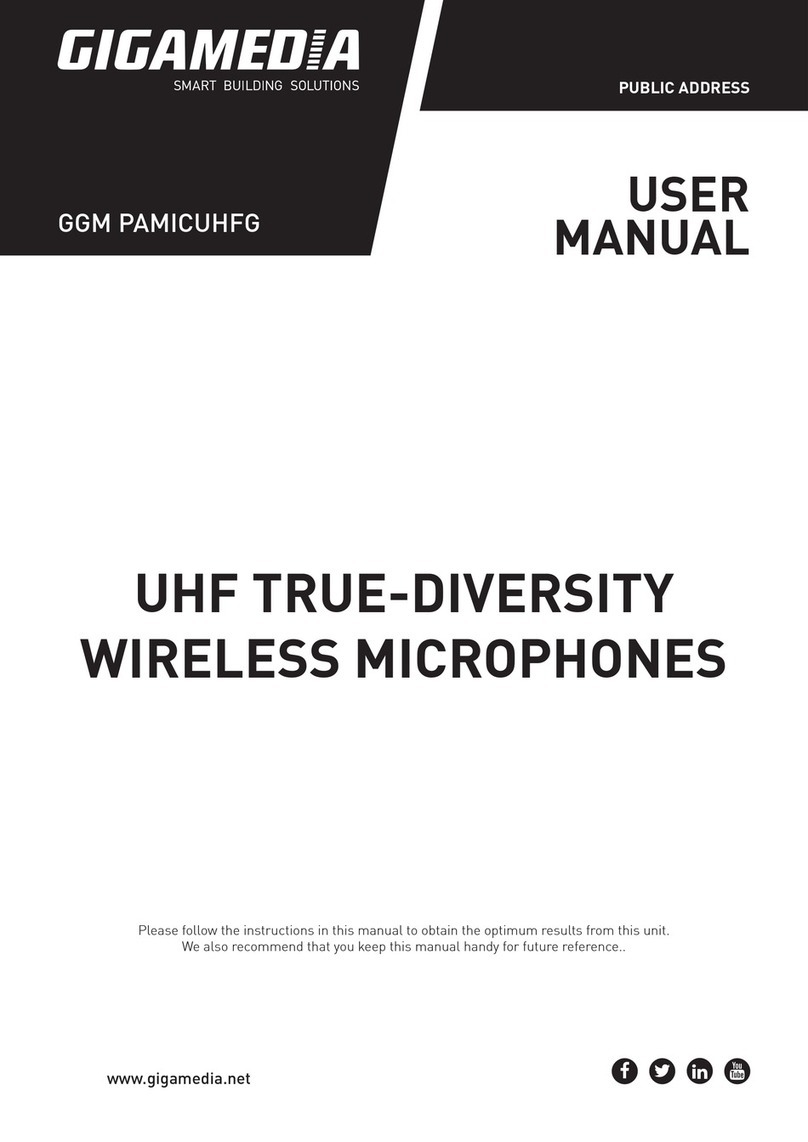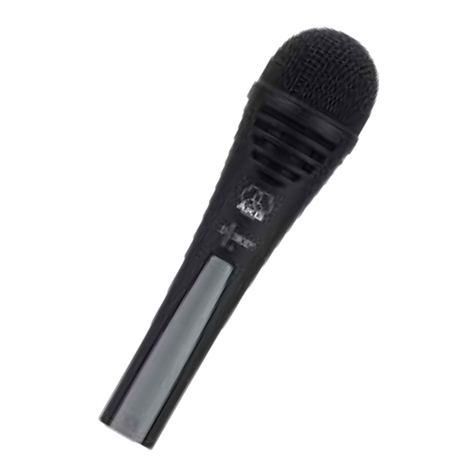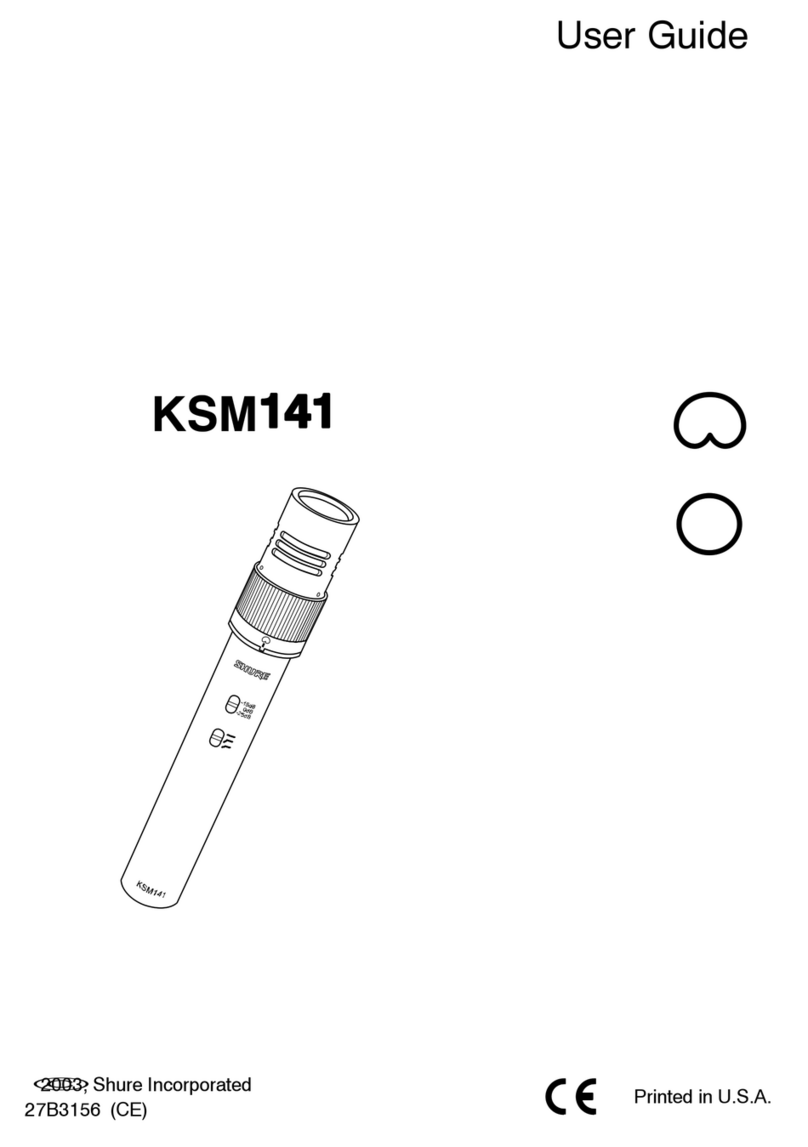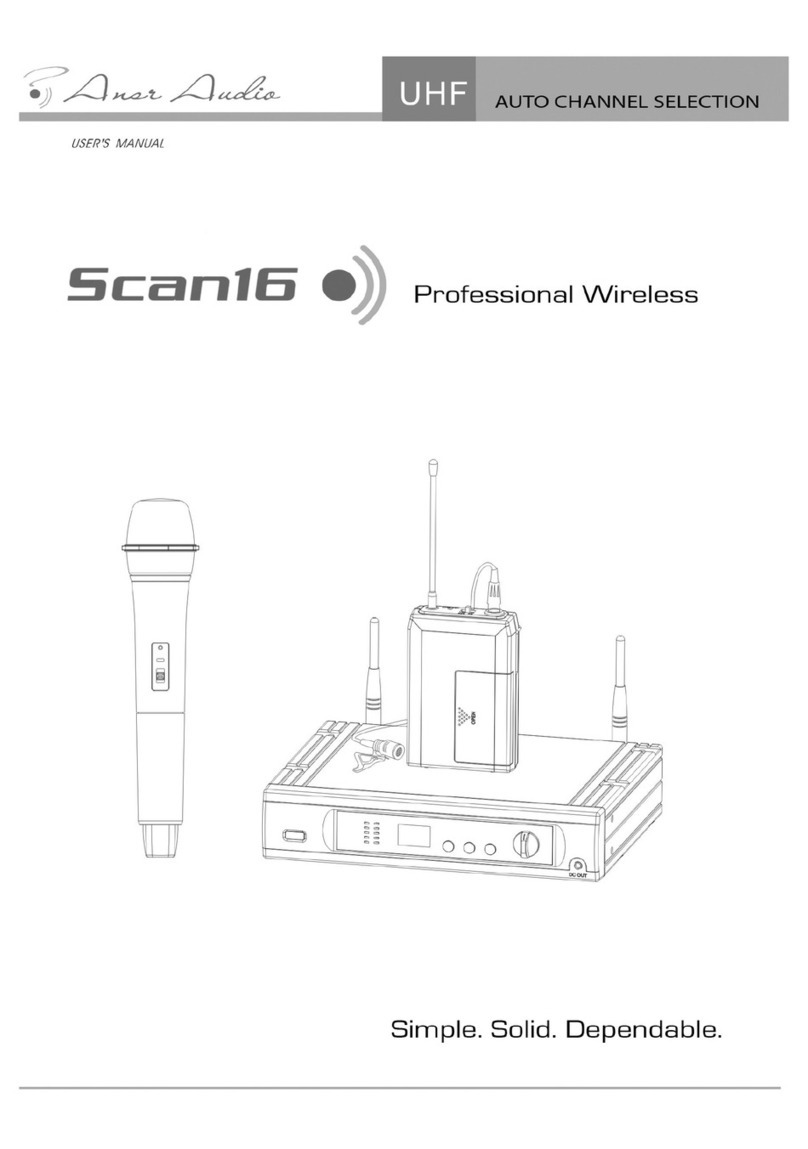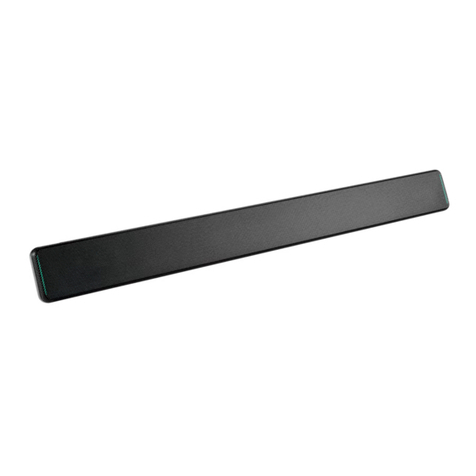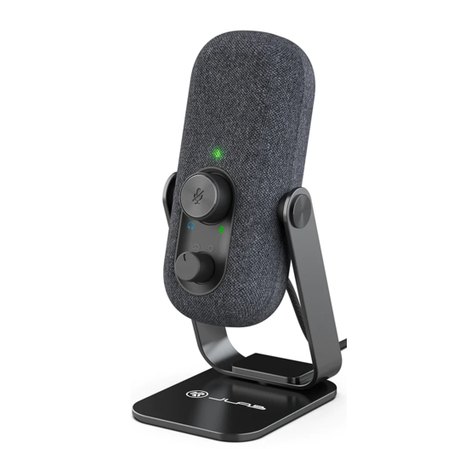Elektret-
Schwanenhalsmikrofon
Bitte lesen Sie diese Bedienungsanleitung vor dem
Betrieb gründlich durch und heben Sie sie für ein
späteres Nachlesen auf.
1 Einsatzmöglichkeiten
Dieses Schwanenhalsmikrofon mit sehr guter
Sprachverständlichkeit ist speziell für Durchsagen,
Vorträge oder sonstige Sprachübertragung geeig-
net, bei denen ein feststehendes Mikrofon benötigt
wird. Es lässt sich direkt auf einen XLR-Mikrofon-
anschluss stecken (z. B. bei Mischpulten) oder
zusammen mit einem Mikrofonfuß DMS-… aus
dem Sortiment von „img Stage Line“ als Tischmi-
krofon einsetzen. Zum Betrieb des Mikrofons ist
eine Phantomspeisung (9 – 48 V ) erforderlich.
2 Wichtige Hinweise für den Gebrauch
Das Mikrofon entspricht allen erforderlichen Richtli-
nien der EU und ist deshalb mit gekennzeichnet.
EMG-500P
Best.-Nr. 23.1980
wwwwww..iimmggssttaaggeelliinnee..ccoomm
GSetzen Sie das Mikrofon nur im Innenbereich ein.
Schützen Sie es vor Feuchtigkeit und Hitze
(zulässiger Einsatztemperaturbereich 0 – 40 °C).
GVerwenden Sie zum Reinigen nur ein trockenes,
weiches Tuch, auf keinen Fall Chemikalien oder
Wasser.
GWird das Mikrofon zweckentfremdet, falsch an-
geschlossen oder nicht fachgerecht repariert,
kann keine Haftung für daraus resultierende
Sach- oder Personenschäden und keine Garan-
tie für das Mikrofon übernommen werden.
3 Inbetriebnahme
1) Den beiliegenden Wind-/Poppschutz auf das
Mikrofon setzen.
2) Das Mikrofon auf einen XLR-Mikrofonanschluss
oder auf einen Mikrofonfuß stecken. Der
Mikrofoneingang muss eine Phantomspeisung
Soll das Mikrofon endgültig aus dem
Betrieb genommen werden, übergeben
Sie es zur umweltgerechten Entsorgung
einem örtlichen Recyclingbetrieb.
Electret Gooseneck Microphone
Please read these operating instructions carefully
prior to operation and keep them for later reference.
1 Applications
This gooseneck microphone for high speech intelli-
gibility is ideally suited for announcements, lectures
or any other voice transmission requiring a station-
ary microphone. It can directly be inserted into a
XLR microphone connection (e. g. on mixers) or be
used as a desk microphone (together with a micro-
phone base DMS-.. from the range of “img Stage
Line”). For operation of the microphone, a phantom
power (9 – 48 V ) will be required.
2 Important Notes
The microphone corresponds to all required direc-
tives of the EU and is therefore marked with .
GThe microphone is suitable for indoor use only.
Protect it against humidity and heat (admissible
ambient temperature range 0 – 40 °C).
GFor cleaning only use a dry, soft cloth; never use
water or chemicals.
GNo guarantee claims for the microphone and no
liability for any resulting personal damage or
material damage will be accepted if the micro-
phone is used for other purposes than originally
intended, if it is not correctly connected, or if it is
not repaired in an expert way.
3 Operation
1) Place the windshield/pop protection supplied onto
the microphone.
2) Insert the microphone into a XLR microphone
connection or a microphone base. The micro-
phone input must provide a phantom power
(9 – 48 V ). If not, connect the microphone via a
separate phantom power supply unit (e. g. EMA-3,
If the microphone is to be put out of oper-
ation definitively, take it to a local recy-
cling plant for a disposal which will not be
harmful to the environment.
EMA-200, EMA-400 from “img Stage Line”) to
the audio unit.
3) Adjust the gooseneck for an optimum position of
the microphone.
4 Specifications
Type of microphone: . . electret
Pick-up pattern: . . . . . cardioid
Frequency range: . . . . 80 – 16 000 Hz
Sensitivity: . . . . . . . . . 5 mV/Pa at 1 kHz
Impedance: . . . . . . . . . 250 Ω
Max. SPL: . . . . . . . . . . 130 dB
Power supply: . . . . . . . phantom power 9 – 48 V
Dimensions. . . . . . . . . ∅19 mm × 480 mm
Gooseneck: . . . . . . . ∅9 mm × 320 mm
Weight: . . . . . . . . . . . . 194 g
Subject to technical modification.
Microphone électret
col de cygne
Veuillez lire la présente notice avec attention avant
le fonctionnement et conservez-la pour pouvoir vous
y reporter ultérieurement.
1 Possibilités dʼutilisation
Ce microphone col de cygne avec une très bonne
compréhension de la parole est spécialement conçu
pour des annonces, conférences ou toute autre
transmission de paroles lorsque un microphone fixe
est nécessaire. Il peut être positionné directement
sur une connexion micro XLR (p. ex. sur une table
de mixage) ou utilisé comme microphone de table
avec un pied micro DMS- de la gamme “img Stage
Line”. Pour le fonctionnement du microphone, une
alimentation fantôme (9 – 48 V ) est nécessaire
.
2 Conseils importants dʼutilisation
Le microphone répond à toutes les directives
nécessaires de lʼUnion européenne et porte donc le
symbole .
GLe microphone nʼest conçu que pour une utilisa-
tion en intérieur. Protégez-le de lʼhumidité et de la
chaleur (plage de température de fonctionnement
autorisée : 0 — 40 °C).
GPour le nettoyage, utilisez uniquement un chiffon
sec et doux, en aucun cas de produits chimiques
ou dʼeau.
GNous déclinons toute responsabilité en cas de
dommages matériels ou corporels résultants si le
microphone est utilisé dans un but autre que celui
pour lequel il a été conçu, sʼil nʼest pas correcte-
ment branché ou sʼil nʼest pas réparé par une per-
sonne habilité ; en outre, la garantie deviendrait
caduque.
Lorsque le microphone est définitivement
retiré du service, vous devez le déposer
dans une usine de recyclage adaptée pour
contribuer à son élimination non polluante.
3 Utilisation
1) Placez la bonnette de protection anti-vent/anti-
pop sur le microphone.
2)
Branchez le microphone sur une connexion micro
XLR ou sur un pied micro. Lʼentrée micro doit
délivrer une alimentation fantôme (9 – 48 V ).
Si
ce nʼest pas le cas, reliez le microphone via une
alimentation fantôme séparée (p. ex. EMA-3,
EMA-200, EMA-400 de “img Stage Line”) à lʼap-
pareil audio.
3) Orientez le microphone de manière optimale en
pliant le col de cygne.
4 Caractéristiques techniques
Type micro : . . . . . . . . électret
Caractéristique : . . . . . cardioïde
Bande passante : . . . . 80 – 16 000 Hz
Sensibilité : . . . . . . . . . 5 mV/Pa à 1 kHz
Impédance : . . . . . . . . 250 Ω
Pression sonore
maximale : . . . . . . . . . 130 dB
Alimentation : . . . . . . . alimentation fantôme
9 – 48 V
Dimensions : . . . . . . . . ∅19 mm × 480 mm
col de cygne : . . . . . ∅9 mm × 320 mm
Poids : . . . . . . . . . . . . . 194 g
Tout droit de modification réservé.
D A CH
GB
Frequenzgang
Frequency response
Réponse en fréquence
F B CH
(9 – 48 V ) bereitstellen. Ist dies nicht der Fall, das
Mikrofon über ein separates Phantomspeisungs-
gerät (z. B. EMA-3, EMA-200, EMA-400 von „img
Stage Line“) an das Audiogerät anschließen.
3) Das Mikrofon durch Biegen des Schwanenhal-
ses optimal ausrichten.
4 Technische Daten
Mikrofontyp: . . . . . . . . Elektret
Richtcharakteristik: . . . Niere
Frequenzbereich: . . . . 80 – 16 000 Hz
Empfindlichkeit: . . . . . 5 mV/Pa bei 1 kHz
Impedanz: . . . . . . . . . . 250 Ω
Max. Schalldruck: . . . . 130 dB
Stromversorgung: . . . . Phantomspeisung
9 – 48 V
Abmessungen: . . . . . . ∅19 mm × 480 mm
Schwanenhals: . . . . ∅9 mm × 320 mm
Gewicht: . . . . . . . . . . . 194 g
Änderungen vorbehalten.
®
MONACOR INTERNATIONAL GmbH & Co. KG
•
Zum Falsch 36
•
28307 Bremen
•
Germany
Copyright
©
by MONACOR INTERNATIONAL. All rights reserved. A-0970.99.04.06.2011
